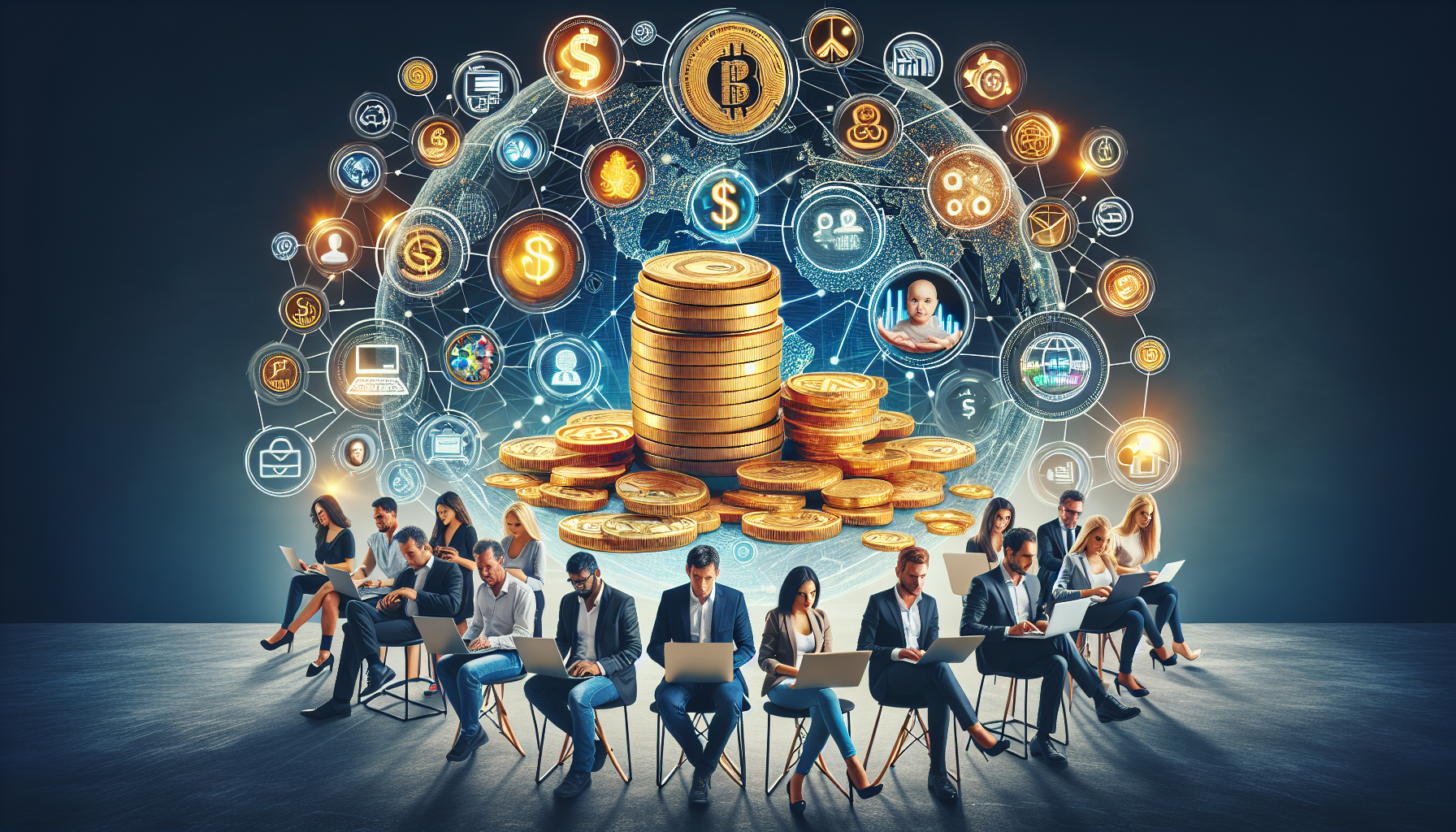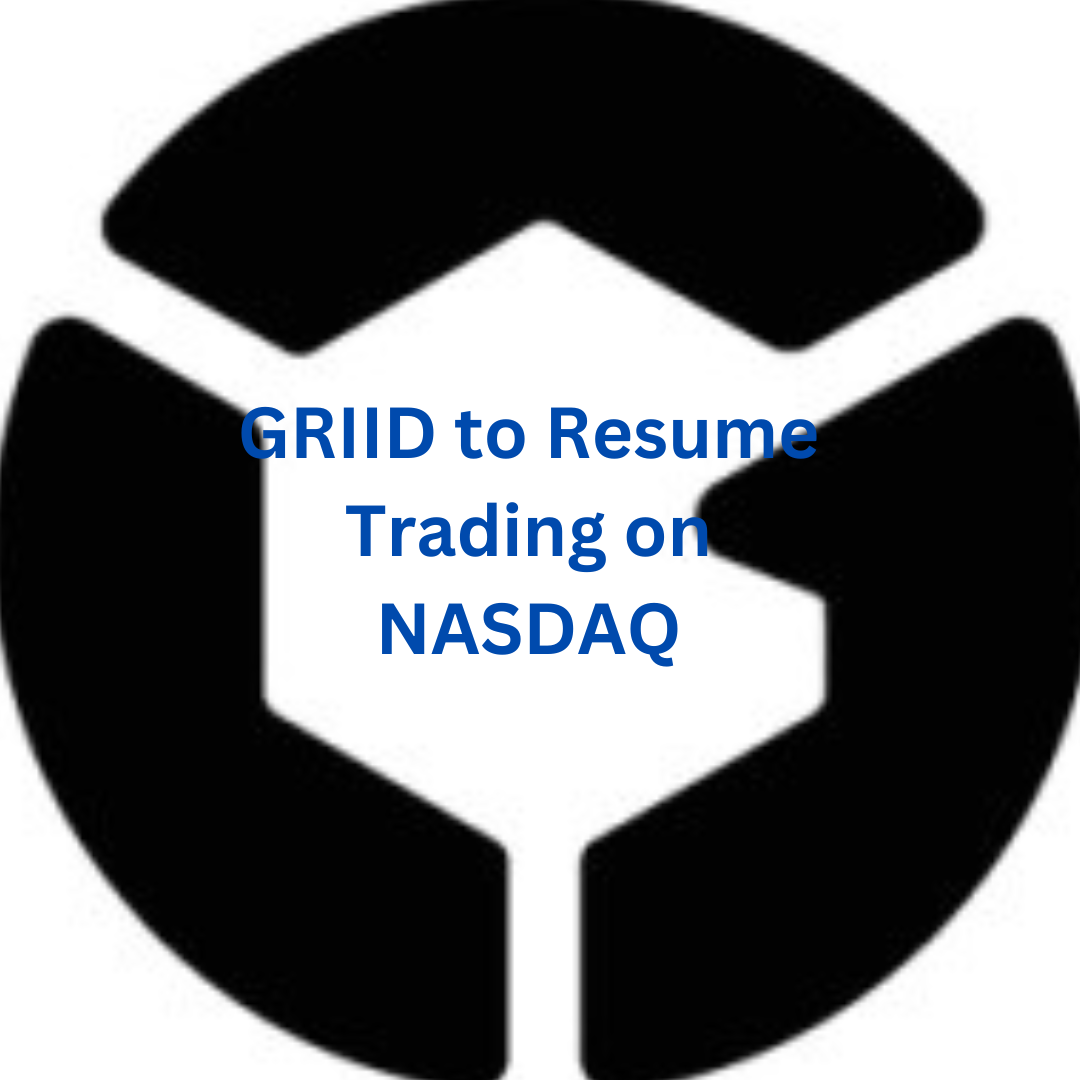Win Real Money Online Instantly: Proven Methods for Immediate Financial Gain
Win Real Money Online Instantly Join Here
https://grabify.link/S7MPC7
In recent years, the quest to win real money online instantly has driven many towards innovative online platforms. Games like Slots Cash™ on the App Store and mobile gaming platforms provided by Skillz showcase how digital arenas are becoming lucrative sources of income for players worldwide 12. With platforms such as Swagbucks and InboxDollars, individuals have multiple pathways to earn by engaging in games, surveys, and various online tasks, enhancing the accessibility to instant financial gains 2.
As technology advances, options to win span across a broad spectrum, including traditional and digital game forms. From classic slots with high Return to Player (RTP) percentages like Mega Joker and Blood Suckers, to engaging in the gig economy through apps that offer micro-jobs, users have a plethora of opportunities to win real money online instantly 32. This article explores proven methods for immediate financial gain, delving into the worlds of cashback apps, cryptocurrency, stock trading platforms, and more, providing readers with insights on navigating the digital landscape profitably.
Exploring Micro-Jobs and Gig Economy Platforms
Exploring the gig economy and micro-job platforms unveils a dynamic landscape where individuals can monetize their skills and services efficiently. Key platforms facilitating this include:
Appen and Clickworker: Specializing in tasks that train artificial intelligence, ranging from object recognition in images to human interaction simulations 7.
Amazon Mechanical Turk and Neevo: Offering a wide array of micro-tasks, these platforms help businesses outsource small, yet significant tasks, such as data annotation and manual task training for AI 7.
Fiverr and Upwork: These platforms allow professionals to sell their services across various fields like design, writing, and music, catering to a broad audience looking for specialized skills 8.
Moreover, platforms like TaskRabbit and PeoplePerHour provide opportunities for individuals to offer their services both locally and globally, thus expanding the potential for financial gain 89. The gig economy's flexibility and the diversity of available tasks make it an attractive option for those looking to win real money online instantly 6789.
Leveraging Cashback and Rebate Apps
Leveraging cashback and rebate apps is a savvy strategy for those looking to win real money online instantly. These apps offer a variety of ways to earn back a portion of your spending through everyday purchases, dining, and even travel. Here's a breakdown of some top-rated apps and their unique features:
Ibotta and Rakuten: Both apps provide users with cashback on a wide range of shopping options. Ibotta requires users to activate offers and clip digital coupons, while Rakuten offers cash back on eligible purchases through their platform or browser extension. Users can receive their savings via bank deposit, PayPal, or gift cards once they reach the minimum threshold 12.
Dosh and Upside: Dosh offers automatic cashback without the need to scan receipts, making it a hassle-free option. Upside provides cashback at grocery stores, restaurants, and gas stations, with some users earning up to 25 cents back per gallon of gas 1213.
Specialty Apps:Fetch: Redeem any purchase receipts for points, exchangeable for gift cards. Despite some users finding it slow to accumulate rewards, the app boasts high ratings 11.Coupons.com: Online Promo Codes and Free Printable Coupons: Focuses on grocery coupons, automatically applying discounts when you link your store loyalty card 11.RetailMeNot: Known for coupons, this app also offers a cashback program, though not all stores participate 11.
Each app has its own set of advantages and potential drawbacks, from ease of use to the range of participating retailers. By choosing the right combination of apps, users can maximize their cashback earnings and move closer to achieving their goal of winning real money online instantly 10111213.
Win Real Money Online Instantly Here is the Way
https://grabify.link/S7MPC7
Participating in the Sharing Economy
Participating in the sharing economy can be a lucrative way to win real money online instantly. This sector allows individuals to capitalize on their unused or spare resources, from accommodation and transportation to personal belongings and skills. Here are some key opportunities:
Accommodation & Space:List empty rooms or entire houses on platforms like Airbnb, Vrbo, or Booking.com: The largest selection of hotels, homes, and vacation rentals 14.Rent out underutilized spaces such as driveways, gardens, or parking spots through Neighbor | The Cheaper, Closer & Safer Storage Marketplace or Campspace 16.
Transportation:Share your car via Turo or Getaround, or become a ride-sharing driver with Uber or Lyft 14.Unique options like turning your car into a moving billboard with Carvertise - Advertise On Uber, Lyft, and Grubhub Cars offer additional income streams 14.
Personal Belongings & Skills:Platforms like Poshmark or Spinlister allow you to rent out clothes or sports equipment 14.Share your knowledge by creating online courses on Udemy or Teachable 14.
The sharing economy's flexibility and low entry barriers make it an appealing option for those looking to supplement their income. With the industry projected to grow significantly, exploring these avenues could lead to substantial financial benefits 17.
Investing in Cryptocurrency and Stock Trading Apps
Investing in the digital currency and stock markets offers a diverse range of options for those aiming to win real money online instantly. Key platforms and their features include:
Cryptocurrency Exchanges:Crypto Trading Platform | Buy, Sell, & Trade Crypto in the US | Binance.US: Offers trading in over 150 coins with fees starting at 0.57 percent for less-common coins, decreasing for high-volume traders. A 5 percent discount on fees is available with BNB payment 19.Coinbase: Known for its wide selection of cryptocurrencies, with fees typically at least 1.99 percent. Lower fees are available through Coinbase Advanced Trade 19.Kraken: Features a vast selection of 236 cryptocurrencies, with fees starting at 0.26 percent. Additional fees apply for card and online banking transactions 19.
Stock and Cryptocurrency Trading Apps:Robinhood: Offers commission-free trading in stocks, ETFs, options, and cryptocurrencies, making it a popular choice for beginners. No minimum deposit required 22.E*TRADE: Provides a user-friendly mobile app and access to a wide range of investment options including stocks, options, ETFs, and mutual funds. Charges $0 commission for online US-listed stock, ETF, and options trades 22.TD Ameritrade: Known for its educational resources and tools, this platform also offers a robust mobile app and access to a broad spectrum of investment options. No minimum deposit required 22.
These platforms provide various features tailored to different investing needs, from simple peer-to-peer payments to advanced trading strategies. By carefully selecting the right platform, individuals can enhance their prospects of financial gain in the digital marketplace 18192022.
Conclusion
This exploration into the myriad ways to win real money online has illuminated a diverse landscape of opportunities, each catering to different interests, skills, and investment levels. The gig economy, cashback and rebate apps, the sharing economy, and digital investing platforms are proven pathways that can lead to immediate financial gain. These methods reinforce the notion that with the right strategies and platforms, individuals can effectively navigate the digital realm to enhance their financial situation.
Moreover, the significance of these opportunities extends beyond individual gain, highlighting a shift towards a more accessible and flexible economic landscape. As we venture further into this digital era, the potential for innovation and growth in these areas is immense, promising even more avenues for financial success. Embracing these options not only offers immediate benefits but also sets the stage for ongoing financial empowerment and independence, urging readers to explore these avenues with keen interest and informed perspective.
FAQs
How can I quickly earn legitimate money?
To earn money quickly and legitimately, you can adopt various strategies such as:
Driving for rideshare services
Freelancing in your area of expertise
Selling unused gift cards
Renting out your car or parking space
Referring friends to apps
Searching for unclaimed money
Delivering groceries or takeout
Selling your clothes online
What apps can pay me real money immediately?
Some popular apps that pay out real money instantly include:
Gaming Apps: Play games and compete with others for rewards (e.g., Mistplay, Lucktastic, Swagbucks Games).
Survey Apps: Provide your opinions on various products and services to earn cash or gift cards.
What are some methods to get money right away?
You can obtain money instantly by:
Selling spare electronics
Selling unused gift cards
Pawning items
Working for immediate pay
Seeking community loans and assistance
Requesting bill forbearance
Asking for a payroll advance
Which app is the most trustworthy for earning money?
Some of the most reliable apps for making money include:
Swagbucks: Best for earning gift cards
Survey Junkie: Best for completing online surveys
Rocket Money: Best for managing finances
DoorDash: Best for delivery drivers
Rakuten Rewards: Best for cash back on purchases
Upside: Best for rewards at gas stations
Upwork: Best for freelancers looking for gigs
Win Real Money Instantly Here
https://grabify.link/S7MPC7 #onlinemoney #makemoney #realmoney #cashapp #giveaway #cashappblessing #giftcard #freegiftcard Win Real Money Online Instantly: Proven Methods for Immediate Financial Gain
Win Real Money Online Instantly Join Here 👇👇
https://grabify.link/S7MPC7
In recent years, the quest to win real money online instantly has driven many towards innovative online platforms. Games like Slots Cash™ on the App Store and mobile gaming platforms provided by Skillz showcase how digital arenas are becoming lucrative sources of income for players worldwide 12. With platforms such as Swagbucks and InboxDollars, individuals have multiple pathways to earn by engaging in games, surveys, and various online tasks, enhancing the accessibility to instant financial gains 2.
As technology advances, options to win span across a broad spectrum, including traditional and digital game forms. From classic slots with high Return to Player (RTP) percentages like Mega Joker and Blood Suckers, to engaging in the gig economy through apps that offer micro-jobs, users have a plethora of opportunities to win real money online instantly 32. This article explores proven methods for immediate financial gain, delving into the worlds of cashback apps, cryptocurrency, stock trading platforms, and more, providing readers with insights on navigating the digital landscape profitably.
Exploring Micro-Jobs and Gig Economy Platforms
Exploring the gig economy and micro-job platforms unveils a dynamic landscape where individuals can monetize their skills and services efficiently. Key platforms facilitating this include:
Appen and Clickworker: Specializing in tasks that train artificial intelligence, ranging from object recognition in images to human interaction simulations 7.
Amazon Mechanical Turk and Neevo: Offering a wide array of micro-tasks, these platforms help businesses outsource small, yet significant tasks, such as data annotation and manual task training for AI 7.
Fiverr and Upwork: These platforms allow professionals to sell their services across various fields like design, writing, and music, catering to a broad audience looking for specialized skills 8.
Moreover, platforms like TaskRabbit and PeoplePerHour provide opportunities for individuals to offer their services both locally and globally, thus expanding the potential for financial gain 89. The gig economy's flexibility and the diversity of available tasks make it an attractive option for those looking to win real money online instantly 6789.
Leveraging Cashback and Rebate Apps
Leveraging cashback and rebate apps is a savvy strategy for those looking to win real money online instantly. These apps offer a variety of ways to earn back a portion of your spending through everyday purchases, dining, and even travel. Here's a breakdown of some top-rated apps and their unique features:
Ibotta and Rakuten: Both apps provide users with cashback on a wide range of shopping options. Ibotta requires users to activate offers and clip digital coupons, while Rakuten offers cash back on eligible purchases through their platform or browser extension. Users can receive their savings via bank deposit, PayPal, or gift cards once they reach the minimum threshold 12.
Dosh and Upside: Dosh offers automatic cashback without the need to scan receipts, making it a hassle-free option. Upside provides cashback at grocery stores, restaurants, and gas stations, with some users earning up to 25 cents back per gallon of gas 1213.
Specialty Apps:Fetch: Redeem any purchase receipts for points, exchangeable for gift cards. Despite some users finding it slow to accumulate rewards, the app boasts high ratings 11.Coupons.com: Online Promo Codes and Free Printable Coupons: Focuses on grocery coupons, automatically applying discounts when you link your store loyalty card 11.RetailMeNot: Known for coupons, this app also offers a cashback program, though not all stores participate 11.
Each app has its own set of advantages and potential drawbacks, from ease of use to the range of participating retailers. By choosing the right combination of apps, users can maximize their cashback earnings and move closer to achieving their goal of winning real money online instantly 10111213.
Win Real Money Online Instantly Here is the Way 👇👇
https://grabify.link/S7MPC7
Participating in the Sharing Economy
Participating in the sharing economy can be a lucrative way to win real money online instantly. This sector allows individuals to capitalize on their unused or spare resources, from accommodation and transportation to personal belongings and skills. Here are some key opportunities:
Accommodation & Space:List empty rooms or entire houses on platforms like Airbnb, Vrbo, or Booking.com: The largest selection of hotels, homes, and vacation rentals 14.Rent out underutilized spaces such as driveways, gardens, or parking spots through Neighbor | The Cheaper, Closer & Safer Storage Marketplace or Campspace 16.
Transportation:Share your car via Turo or Getaround, or become a ride-sharing driver with Uber or Lyft 14.Unique options like turning your car into a moving billboard with Carvertise - Advertise On Uber, Lyft, and Grubhub Cars offer additional income streams 14.
Personal Belongings & Skills:Platforms like Poshmark or Spinlister allow you to rent out clothes or sports equipment 14.Share your knowledge by creating online courses on Udemy or Teachable 14.
The sharing economy's flexibility and low entry barriers make it an appealing option for those looking to supplement their income. With the industry projected to grow significantly, exploring these avenues could lead to substantial financial benefits 17.
Investing in Cryptocurrency and Stock Trading Apps
Investing in the digital currency and stock markets offers a diverse range of options for those aiming to win real money online instantly. Key platforms and their features include:
Cryptocurrency Exchanges:Crypto Trading Platform | Buy, Sell, & Trade Crypto in the US | Binance.US: Offers trading in over 150 coins with fees starting at 0.57 percent for less-common coins, decreasing for high-volume traders. A 5 percent discount on fees is available with BNB payment 19.Coinbase: Known for its wide selection of cryptocurrencies, with fees typically at least 1.99 percent. Lower fees are available through Coinbase Advanced Trade 19.Kraken: Features a vast selection of 236 cryptocurrencies, with fees starting at 0.26 percent. Additional fees apply for card and online banking transactions 19.
Stock and Cryptocurrency Trading Apps:Robinhood: Offers commission-free trading in stocks, ETFs, options, and cryptocurrencies, making it a popular choice for beginners. No minimum deposit required 22.E*TRADE: Provides a user-friendly mobile app and access to a wide range of investment options including stocks, options, ETFs, and mutual funds. Charges $0 commission for online US-listed stock, ETF, and options trades 22.TD Ameritrade: Known for its educational resources and tools, this platform also offers a robust mobile app and access to a broad spectrum of investment options. No minimum deposit required 22.
These platforms provide various features tailored to different investing needs, from simple peer-to-peer payments to advanced trading strategies. By carefully selecting the right platform, individuals can enhance their prospects of financial gain in the digital marketplace 18192022.
Conclusion
This exploration into the myriad ways to win real money online has illuminated a diverse landscape of opportunities, each catering to different interests, skills, and investment levels. The gig economy, cashback and rebate apps, the sharing economy, and digital investing platforms are proven pathways that can lead to immediate financial gain. These methods reinforce the notion that with the right strategies and platforms, individuals can effectively navigate the digital realm to enhance their financial situation.
Moreover, the significance of these opportunities extends beyond individual gain, highlighting a shift towards a more accessible and flexible economic landscape. As we venture further into this digital era, the potential for innovation and growth in these areas is immense, promising even more avenues for financial success. Embracing these options not only offers immediate benefits but also sets the stage for ongoing financial empowerment and independence, urging readers to explore these avenues with keen interest and informed perspective.
FAQs
How can I quickly earn legitimate money?
To earn money quickly and legitimately, you can adopt various strategies such as:
Driving for rideshare services
Freelancing in your area of expertise
Selling unused gift cards
Renting out your car or parking space
Referring friends to apps
Searching for unclaimed money
Delivering groceries or takeout
Selling your clothes online
What apps can pay me real money immediately?
Some popular apps that pay out real money instantly include:
Gaming Apps: Play games and compete with others for rewards (e.g., Mistplay, Lucktastic, Swagbucks Games).
Survey Apps: Provide your opinions on various products and services to earn cash or gift cards.
What are some methods to get money right away?
You can obtain money instantly by:
Selling spare electronics
Selling unused gift cards
Pawning items
Working for immediate pay
Seeking community loans and assistance
Requesting bill forbearance
Asking for a payroll advance
Which app is the most trustworthy for earning money?
Some of the most reliable apps for making money include:
Swagbucks: Best for earning gift cards
Survey Junkie: Best for completing online surveys
Rocket Money: Best for managing finances
DoorDash: Best for delivery drivers
Rakuten Rewards: Best for cash back on purchases
Upside: Best for rewards at gas stations
Upwork: Best for freelancers looking for gigs
Win Real Money Instantly Here 👇👇
https://grabify.link/S7MPC7
#onlinemoney #makemoney #realmoney #cashapp #giveaway #cashappblessing #giftcard #freegiftcard











